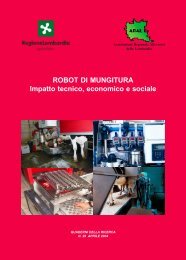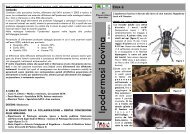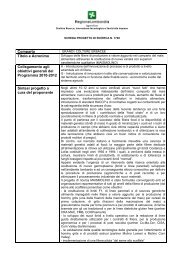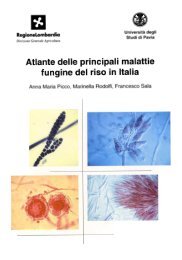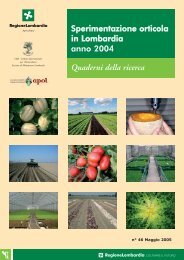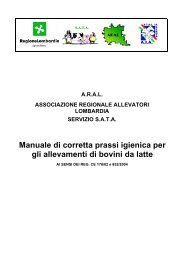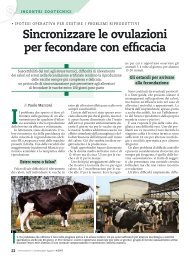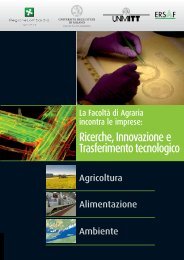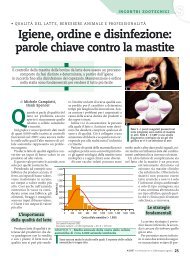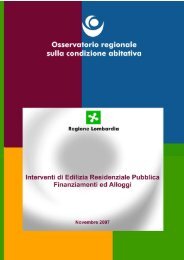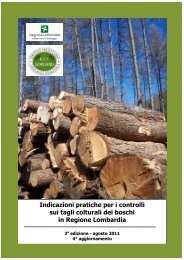Aree prioritarie per la biodiversità nelle Alpi e Prealpi Lombarde
Aree prioritarie per la biodiversità nelle Alpi e Prealpi Lombarde
Aree prioritarie per la biodiversità nelle Alpi e Prealpi Lombarde
Create successful ePaper yourself
Turn your PDF publications into a flip-book with our unique Google optimized e-Paper software.
1.1. Introduzione<br />
<strong>Aree</strong> <strong>prioritarie</strong> <strong>per</strong> <strong>la</strong> <strong>biodiversità</strong><br />
<strong>nelle</strong> <strong>Alpi</strong> e <strong>Prealpi</strong> lombarde Fondazione Lombardia<br />
<strong>per</strong> l’Ambiente<br />
L’individuazione delle <strong>Aree</strong> <strong>prioritarie</strong> <strong>per</strong> <strong>la</strong> <strong>biodiversità</strong> <strong>nelle</strong> <strong>Alpi</strong> e <strong>Prealpi</strong> lombarde è avvenuta<br />
mediante l’utilizzo del<strong>la</strong> medesima metodologia impiegata <strong>per</strong> <strong>la</strong> definizione delle <strong>Aree</strong> <strong>prioritarie</strong><br />
<strong>per</strong> <strong>la</strong> <strong>biodiversità</strong> nel<strong>la</strong> Pianura Padana lombarda e Oltrepò Pavese (si veda allegato al<strong>la</strong> d.d.g. 3<br />
aprile 2007 – n. 3376 e Bogliani et al., 2007a. <strong>Aree</strong> <strong>prioritarie</strong> <strong>per</strong> <strong>la</strong> <strong>biodiversità</strong> nel<strong>la</strong> Pianura<br />
Padana lombarda. Fondazione Lombardia <strong>per</strong> l’Ambiente e Regione Lombardia) e si è quindi<br />
ispirata all’approccio di conservazione ecoregionale 1 (Dinerstein et al. 2000) messo a punto negli<br />
Anni Novanta da WWF (World Wide Fund for Nature) e The Nature Conservancy (TNC), e in<br />
partico<strong>la</strong>re al<strong>la</strong> definizione del<strong>la</strong> biodiversity vision <strong>per</strong> le <strong>Alpi</strong> (Arduino et al. 2006, Mörschel 2004),<br />
che prevede un’analisi a <strong>la</strong>rga sca<strong>la</strong> (<strong>per</strong> es.: 1:500.000, una visione d’insieme senza dettagli), si<br />
basa sul sa<strong>per</strong>e degli es<strong>per</strong>ti (ex<strong>per</strong>t-based) e non contemp<strong>la</strong> nuove raccolte di dati.<br />
Come <strong>per</strong> <strong>la</strong> stesura del<strong>la</strong> biodiversity vision del<strong>la</strong> Pianura Padana lombarda e Oltrepò Pavese, <strong>per</strong><br />
le <strong>Alpi</strong> e <strong>Prealpi</strong> lombarde è stata seguita <strong>la</strong> procedura standard modificata essenzialmente nei<br />
seguenti aspetti;<br />
- utilizzo di una sca<strong>la</strong> di maggior dettaglio (1:100.000) <strong>per</strong> l’individuazione dei confini delle<br />
<strong>Aree</strong> importanti <strong>per</strong> i diversi gruppi tematici e, in seguito, <strong>per</strong> <strong>la</strong> definizione delle <strong>Aree</strong><br />
<strong>prioritarie</strong> <strong>per</strong> <strong>la</strong> <strong>biodiversità</strong> (1:25.000);<br />
- definizione e individuazione, da parte degli es<strong>per</strong>ti facenti parte dei differenti gruppi<br />
tematici, delle <strong>Aree</strong> importanti da considerarsi di rilevanza continentale o le cui<br />
caratteristiche peculiari risultassero tali da conferire all’area stessa il valore di Area<br />
prioritaria, anche qualora nessun altro gruppo tematico le avesse identificate come<br />
importanti;<br />
- attribuzione di medesimo valore al<strong>la</strong> totalità delle <strong>Aree</strong> <strong>prioritarie</strong> identificate.<br />
1 Un’ecoregione è un’unità terrestre (o acquatica) re<strong>la</strong>tivamente vasta che contiene una combinazione distinta di<br />
comunità naturali, le quali condividono <strong>la</strong> maggior parte delle specie, delle dinamiche e delle condizioni ambientali.<br />
8



